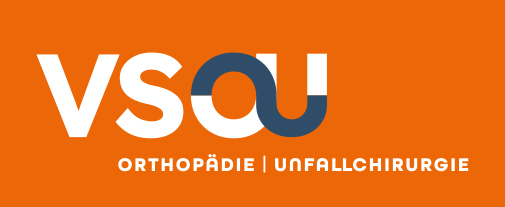Ihre Suche ergab 3 Treffer
Metatarsalgie
Zusammenfassung: Die Metatarsalgie ist über den Schmerz als Leitsymptom im Bereich des zentralen Vorfußes definiert. Damit ist die Metatarsalgie ein „Sammelbecken“ für verschiedene Krankheitsbilder, die in dieser Region ähnliche Beschwerden verursachen können. Als häufigste Ursachen können eine Schädigung der plantaren Platte des Kleinzehengrundgelenks mit konsekutiver Instabilität des Gelenks, ein Morton-Neurom, eine degenerative Schädigung des Kleinzehengrundgelenks als Spätstadium einer avaskulären Knorpel-Knochen-Nekrose, eine Ermüdungsfraktur eines Os metatarsale oder eine Synovitis als Manifestation einer Erkrankung aus dem rheumatischen Formenkreis genannt werden. Da eine adäquate Therapie nur bei Identifikation der Grunderkrankung möglich ist, steht eine sorgfältige klinische Untersuchung mit ergänzender Röntgendiagnostik des Fußes in 2 Ebenen im Stand am Beginn der Behandlung. Die konservative Therapie besteht meist aus einer konsequenten Entlastung des schmerzhaften Vorfußes durch eine Einlagenversorgung in Kombination mit einer unspezifischen analgetischen Medikation. Führt dies nicht zu einem funktionell befriedigenden Zustand, sind operative Maßnahmen in Erwägung zu ziehen. Diese müssen spezifisch auf die zugrunde liegende Pathologie ausgerichtet sein.
Summary: Metatarsalgia is defined by pain as the main symptom in the area of the central forefoot. This means that various conditions with different etiology can cause metatarsalgia The most common causes include damage to the plantar plate of the metatarsophalangeal joint leading to instability. Other possible causes for metatarsalgia are a Morton’s neuroma, degenerative changes to the metatarsophalangeal joint as a late stage of avascular necrosis (Freibergs disease), a stress fracture of a metatarsal bone, or a synovitis as a manifestation of a rheumatic disease. Since an adequate therapy is only possible upon identification of the underlying disease, a careful clinical examination along with additional X-ray diagnostics of the foot in two planes while standing is the starting point of the treatment. The conservative therapy mainly consists of a consistent unloading of the painful forefoot through the use of insoles in combination with a nonspecific analgetic medication. If this does not lead to a functionally satisfactory condition, surgical measures should be considered, which must be specifically aimed at the underlying pathology.
Die aktuelle S2e-Leitlinie zum Hallux valgus
Zusammenfassung: Die Hallux-valgus-Fehlstellung ist unbehandelt meist als progrediente Deformität anzusehen, die jedoch nicht zwangsläufig zu Schmerzen und Leidensdruck bei den Patienten führt.
Prävention: 1. fußgerechtes Schuhwerk zur Vermeidung sowohl von Druckstellen als auch einer forcierten Progredienz der Pathologie; funktionelle Stabilisierung des Fußes mittels Gymnastik oder physiotherapeutischer Anleitung. 2. Orthesenversorgung und/oder Einlagenversorgung zur Verbesserung der funktionellen Stabilisierung. 3. Konsequente adaptierte postoperative Nachbehandlung, welche sich an den operativen Maßnahmen orientiert.
Die Indikation zur Einleitung einer therapeutischen Maßnahme beim Hallux valgus orientiert sich am Alter und dem Leidensdruck des Patienten sowie dem Vorliegen einer Arthrose im Großzehengrundgelenk. Weitere patientenspezifische Pathologien können den Beginn einer Therapie ebenfalls beeinflussen.
In der ersten Stufe der ambulanten Therapie stehen die Beratung und Physiotherapie im Vordergrund, additiv Analgetika oder antiphlogistische Maßnahmen. Manuelle und physiotherapeutische Behandlungen, Orthesen oder orthopädietechnische Therapien sind in Anbetracht der bestehenden Pathologie und des Leidensdrucks anzuwenden.
In der Stufe 2 der ambulanten bzw. stationären therapeutischen Maßnahmen ist beim symptomatischen Hallux valgus die operative Therapie indiziert. Diese sollte sich dabei sowohl am Schweregrad der Pathologie als auch den postoperativen Mobilisationsmöglichkeiten des Patienten und den weiteren patientenspezifischen Kriterien orientieren.
Summary: The hallux valgus deformity is untreated usually regarded as progressive deformity that does not necessarily lead to pain and suffering for the patient.
Prevention: 1. Foot conforming footwear to avoid bruising and to avoid a forced progression of pathology, functional stabilization of the foot by means of gymnastics or physiotherapy instructions. 2. Orthotic and/or insoles to improve the functional stabilization. 3. Consistent adapted postoperative treatment, which is based on the operation procedure.
The indication for initiation of a therapeutic measure is based on the age and the suffering of the patient as well as presence of arthritis in the MTP-I-joint. More patient-specific pathologies may affect the initiation of treatment also.
In the first stage of outpatient consultation and physiotherapy are at the forefront, additive analgesic or anti-inflammatory medication. Manual therapies, physiotherapy, orthotics or orthopedic measures adopted in view of the existing pathology and suffering pressure.
In stage 2 of outpatient or inpatient surgical treatment is indicated therapeutic measures when symptomatic hallux valgus. Surgical therapy should be orientated on the severity of the pathology and the postoperative mobilization possibilities of the patient and other patient-specific criteria.
Metatarsalgie
Zusammenfassung: Unter Metatarsalgie werden Erkrankungen und Verletzungen des Vorfußes zusammengefasst, die zu Schmerzen unter dem zentralen Vorfuß, insbesondere unter den Metatarsale 2–4 führen. Unter einer strukturellen Metatarsalgie werden Krankheitsbilder verstanden, bei denen eine Schädigung der Struktur im Vordergrund steht. Hier sind vor allem das Morton-Neurom, eine Ermüdungsfraktur, eine entzündliche Gelenkerkrankung aus dem rheumatischen Formenkreis und eine avaskuläre Knorpel-Knochen-Nekrose zu nennen. Bei einer biomechanischen Metatarsalgie stehen die Veränderungen der Biomechanik im Vordergrund. Strukturelle Schäden, wie z.B. eine kontrakte Hammerzehe oder eine Destruktion der plantaren Fibrocartilago des Kleinzehengrundgelenks (plantare Platte) treten erst in einem fortgeschrittenen Stadium auf. Neben Kenntnissen von Anatomie und Biomechanik ist die Identifikation der Ursachen für die Diagnostik und Therapie der Metatarsalgie von zentraler Bedeutung. Dabei sind Kleinzehe und Zehengrundgelenk immer als Funktionseinheit zu betrachten.
Summary: Metatarsalgia is defined as pain under the metatarsal heads, especially the 2nd to 4th metatarsal. Metatarsalgia can further be classified into biomechanic or structural metatarsalgia. Different entities can result in structural changes causing Metatarsalgie: Morton-Neuroma, a fatigue fracture of a metatarsal bone, monarthritis of a Metatarsophalangeal joint, degenerative changes after avascular necrosis of the metatarsal head. Biomechanic metatarsalgia is caused by alterations in the biomechanics of the forefoot especially the metatarsophalangeal joint. Structural changes like a hammertoe deformity or a rupture of the plantar plate may develop in advanced stages. Treatment concepts have to take the specific deficit into account. It is important to understand that lesser toes and the metatarsophalangeal joint constitute a functional entity.
